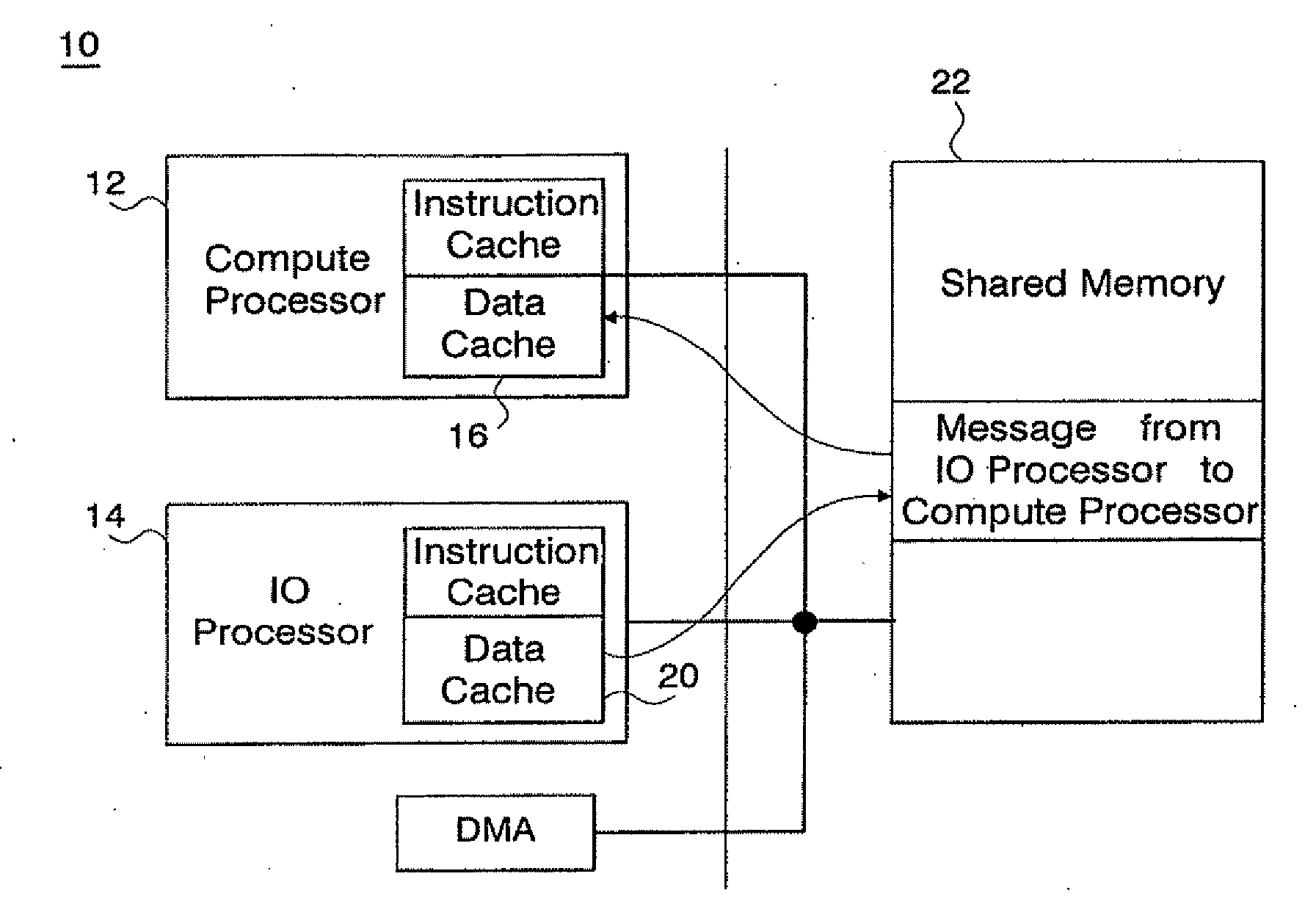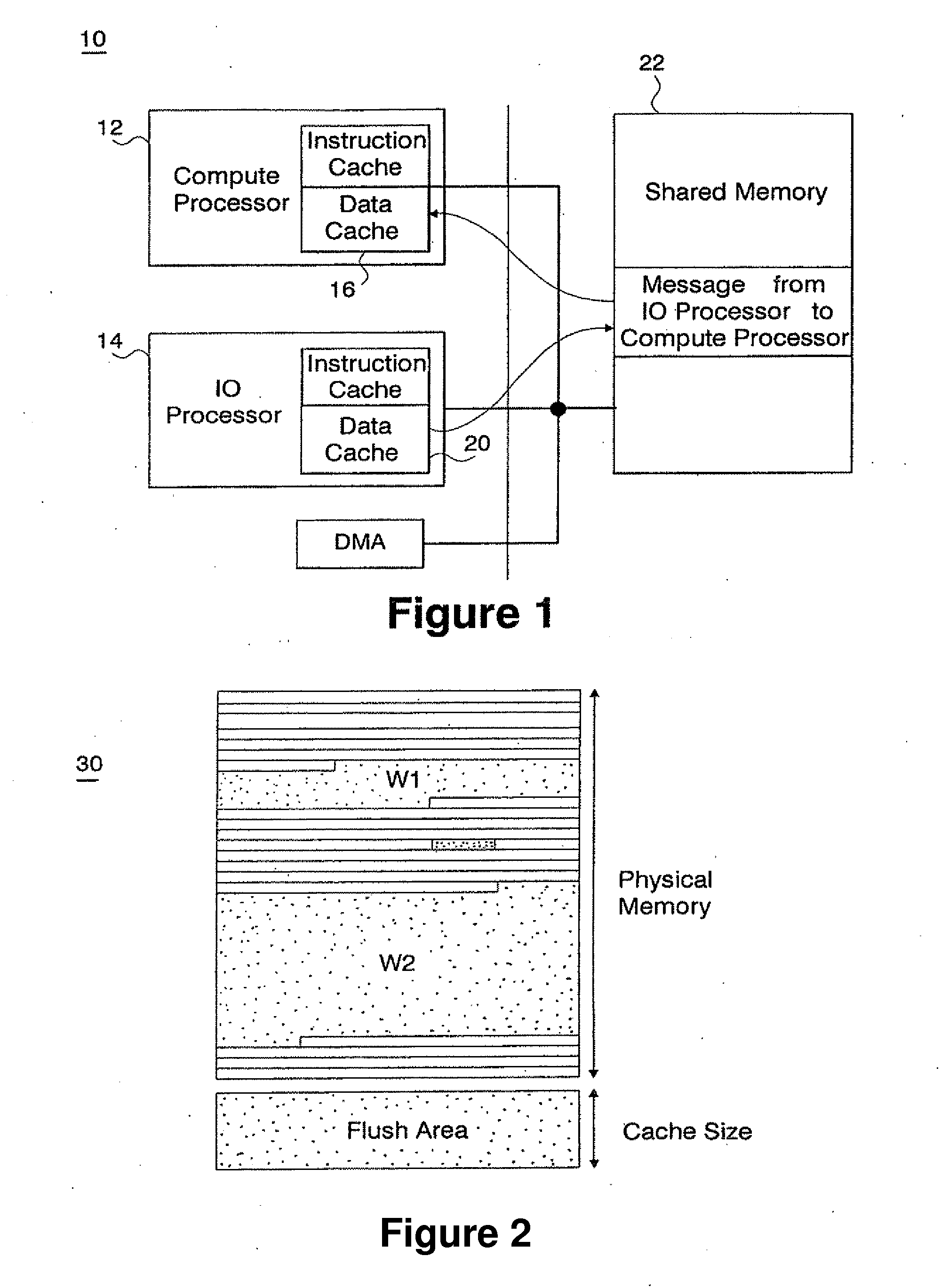Managing coherence via put/get windows
a coherence and window technology, applied in the direction of memory adressing/allocation/relocation, multi-programming arrangements, instruments, etc., can solve the problems of buffering messages, consuming memory, and exacerbated problems for these large-scale computers, so as to achieve efficient high-speed message-passing communications, reduce the impact of each processor performance, and reduce the effect of buffering
- Summary
- Abstract
- Description
- Claims
- Application Information
AI Technical Summary
Benefits of technology
Problems solved by technology
Method used
Image
Examples
first embodiment
If the Size of the Message being Received is Smaller than the Size of L1
[0035]In this case, the invention makes use of a software instruction termed “data cache block flush and invalidate” (DCBF), whereby a contiguous range of memory is written from L1 back to the common memory. DCBF is a PowerPC BookE instruction; similar instructions exist for other processors. At the same time, the data in the cache is marked as invalid, and cannot be used without reloading contents of the common memory. A DCBF is issued for every line in the address window.
[0036]More specifically, when the window is opened for puts or gets, software, (in the communication library) instructs the receiving processor (the compute Processor in our dual processor node) to flush the contents of L1 in the address window, as described above. This simple operation insures that the data in common memory are the same as the data in the compute processor's cache, and further, because of the invalidate, allows an opportunity...
second embodiment
If the Size of the Message Received is Larger than the Size of L1
[0037]In this case, the invention makes use of an instruction termed “data cache block zero” (DCBZ), to reserve a continuous physical address range equal in size to L1. DCBZ creates a new cache line with contents of zero. If a new cache line is not available, then another cache line in L1 (for example, the least recently used line), has its data written back to the common memory, and is then zero'ed with the address given by the DCBZ instruction. DCBZ is a PowerPC BookE instruction; similar instructions exist for other processors. The software executes DCBZ to each line of the reserved area consecutively, where a line of the reserved area is equal in size to a cache line and like-aligned. This causes all lines in the L1 to be flushed, i.e., all modified lines are written back to common memory, because the entire contents of L1 is replaced quickly from the reserved area. The software then allows the compute processor to...
PUM
 Login to View More
Login to View More Abstract
Description
Claims
Application Information
 Login to View More
Login to View More - R&D
- Intellectual Property
- Life Sciences
- Materials
- Tech Scout
- Unparalleled Data Quality
- Higher Quality Content
- 60% Fewer Hallucinations
Browse by: Latest US Patents, China's latest patents, Technical Efficacy Thesaurus, Application Domain, Technology Topic, Popular Technical Reports.
© 2025 PatSnap. All rights reserved.Legal|Privacy policy|Modern Slavery Act Transparency Statement|Sitemap|About US| Contact US: help@patsnap.com


